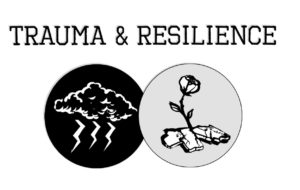At A Way Home Washington, our core values include equity, youth partnership, a data-driven culture and trauma-informed practice. Our Coaching and Improvement Manager, Ashley, writes about how trauma informs our work at A Way Home Washington.
“When you get housed, staff is constantly hounding you to get a job and make the rent. When I was on the streets I couldn’t break down and fall apart, I had to stay strong every second. Now I’m in housing and feel safe for the first time in years, and I just need to lock myself in my room and feel my feelings. But no, they kick you out for that.”
This is how one young person described their experience in housing programs to me when I worked at The Mockingbird Society. I got to work closely with young people who exited homelessness into housing programs, and I heard stories of young people who were continually kicked out of shelter and housing. One lost their housing for three days after they returned smelling like weed. Another asked for a night away to attend their dad’s wedding, had their request denied and then got kicked out for going anyway. Yet another was asked to leave for being behind on their “productive hours.”
Trauma is ubiquitous and ongoing for young people experiencing homelessness. Young people of color and LGBTQ+ young folks must also survive racism, homophobia and transphobia while experiencing trauma. Feeling unsafe for long periods of time causes people to stay in a state of hypervigilance, or what young people call ‘survival mode’. They need to constantly watch their backs and focus on surviving the next night, so situations that may not feel threatening to a person who has not experienced trauma may lead to bigger reactions than housing program staff expect.
These are extremely difficult experiences, and young people are not healed the second they get housed. They can’t just switch off from survival mode immediately. Yet our programs and services are constructed as if they could. We want young people working, paying rent and being “productive” as soon as possible once they’re housed. We aren’t prepared to respond to young people’s reactions when they’re still living in survival mode. We expect them to live inside, often in group settings, with no peer conflict and with totally new coping mechanisms.
A system designed to serve young people wouldn’t result in so much cycling through programs. The fact that young people are able to navigate these systems that weren’t designed with their needs in mind is a testament to their resilience. In many cases, young people are relying on their own strength to survive and thrive despite of the system, not because of it.

We need to transform the system and stop treating young people like their trauma will abruptly end the second they’re housed. On the individual level, we need to work with young people in ways that take their traumatic experiences into account, and we need to recognize their trauma responses for what they are. At a societal level, we need to dismantle toxic systems, policies and practices that create environments primed for trauma.
At A Way Home Washington, we are committed to transforming our statewide system in partnership with young people themselves. We need a system that sees each young person as whole, capable, smart and deserving. We want to address the root causes of homelessness and trauma to create a Yes to Yes system with the capacity to support each young person in the way each young person needs to be supported.
Recently, I attended a Learning Session hosted by Community Solutions. During one of the workshops, the facilitator asked participants to list the barriers to housing people may experience. The answers were familiar: No job. Refuses housing. Mental illness. And then, the facilitator asked us to change the way we think about these barriers. Instead of seeing these characteristics as barriers that keep people from being housed, we should think about the barriers our systems put up to keep people with these characteristics from being housed.
The Anchor Community Initiative is working to actively identify the barriers keeping their local systems from being responsive to young people. Communities then address these barriers through coaching and support from experts. If a barrier is too big for a single community to solve, we work in partnership with the Office of Homeless Youth to advocate for policy and funding changes at the state level. Through this approach, we know that we’ll be able to build trauma-informed Yes to Yes systems.

Leave a Reply